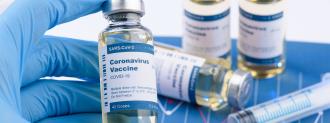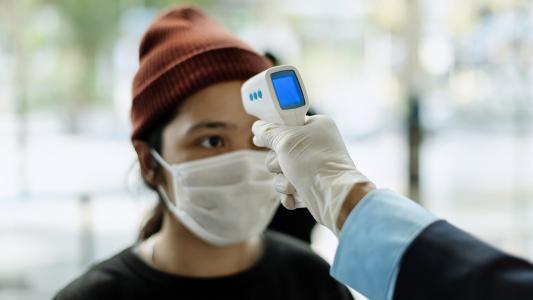Oxford University’s Jenner Institute just launched Europe’s first Phase I human trial of a coronavirus vaccine, and it’s already planning to kick off a combined Phase II / Phase III trial in May.
The Oxford coronavirus vaccine has already proven effective in a small monkey study, and if these human trials involving some 6,000 people go well, the team believes millions of doses could be ready by September — putting it months ahead of any other COVID-19 vaccine.
The Oxford Coronavirus Vaccine
To create their vaccine, the Oxford team added genetic material from the coronavirus’s spike protein to a harmless cold virus.
The hope is that a dose of this vaccine will prompt the immune system to produce antibodies against the coronavirus. Then, if the virus infects the inoculated person in the future, their immune system will be ready to fight it.
These best-case timeframes are highly ambitious.
Sarah Gilbert
So far, they have reason to believe that it will.
In March, a team at the National Institutes of Health’s Rocky Mountain Laboratory in Montana tested the Oxford coronavirus vaccine on six rhesus macaque monkeys. Twenty-eight days later, the animals were still healthy despite direct exposure to the virus.
“The rhesus macaque is pretty much the closest thing we have to humans,” Vincent Munster, the scientist behind that study, told the New York Times.
Testing on Humans
Still, monkey studies are no substitute for human trials, so those are now the target of the Oxford team’s focus.
For their recently launched Phase I trial, the team is recruiting up to 1,112 healthy adult volunteers near Oxford, Southampton, London, and Bristol in the United Kingdom.
Ten of those volunteers will receive two doses of the new vaccine four weeks apart.
The remaining volunteers will be split into two halves. One half will receive the Oxford coronavirus vaccine, while the other half will receive a licensed meningococcal vaccine as an active control.
The researchers will regularly follow up with the participants, checking their blood to assess how their immune system is responding to the vaccine.
They’ll also go over any symptoms the participants experienced after inoculation. Those that show signs of catching COVID-19 will be tested for the virus.
Protecting Against COVID-19
The hope is that participants who receive the COVID-19 vaccine will contract the coronavirus in lower numbers than those who receive the active control.
Even if just 12 or so people in the control group catch the virus, compared to one or two in the group that receives the Oxford coronavirus vaccine, that would be enough to warrant celebration, Jenner Institute Director Adrian Hill told the NYT.
“Then we have a party and tell the world,” he said.
One of the biggest obstacles standing in the way of that celebration, though, is the potential that infection rates fall in the U.K.
If they remain at current levels, the team could have the data it needs in a couple of months. If they drop, it could take half a year.
“We’re the only people in the country who want the number of new infections to stay up for another few weeks, so we can test our vaccine,” Hill told the NYT.
If numbers do drop, the researchers are prepared to go elsewhere to test the vaccine.
“We’ll have to chase the epidemic,” Hill said. “If it is still raging in certain states, it is not inconceivable we end up testing in the United States in November.”
Millions of Doses by September?
In addition to scheduling the combined Phase II / Phase III trial, the Oxford team is also already considering how to mass produce the coronavirus vaccine should it prove effective.
“It’s pretty clear the world is going to need hundreds of millions of doses, ideally by the end of this year, to end this pandemic, to lead us out of lockdown,” Hill told the BBC.
If granted an emergency approval from regulators, the team thinks it might be possible to have a few million doses ready by September — but that would be assuming everything goes exactly according to plan.
“The best-case scenario is that by the autumn of 2020, we have an efficacy result from Phase III and the ability to manufacture large amounts of the vaccine,” researcher Sarah Gilbert told the Lancet, “but these best-case timeframes are highly ambitious and subject to change.”
We’d love to hear from you! If you have a comment about this article or if you have a tip for a future Freethink story, please email us at [email protected].






